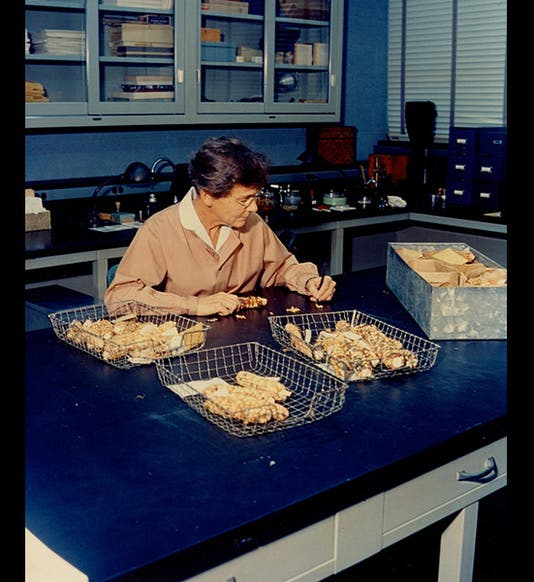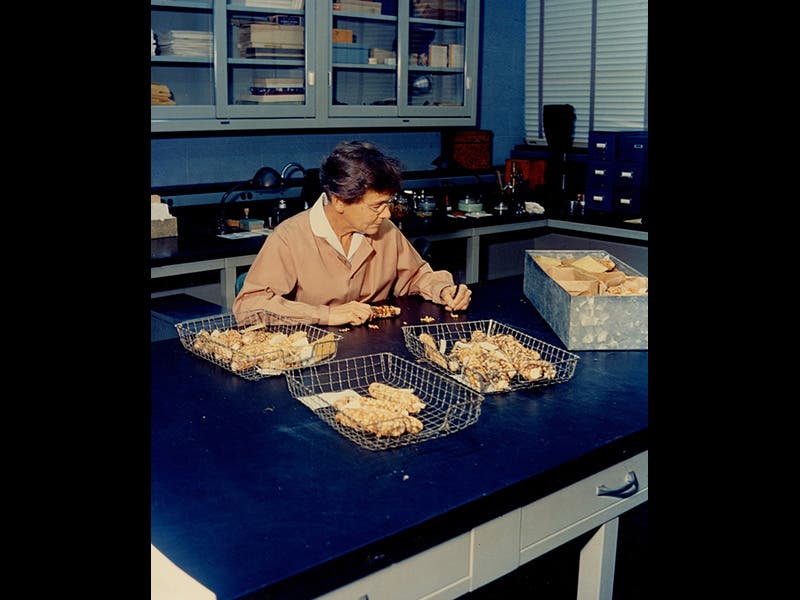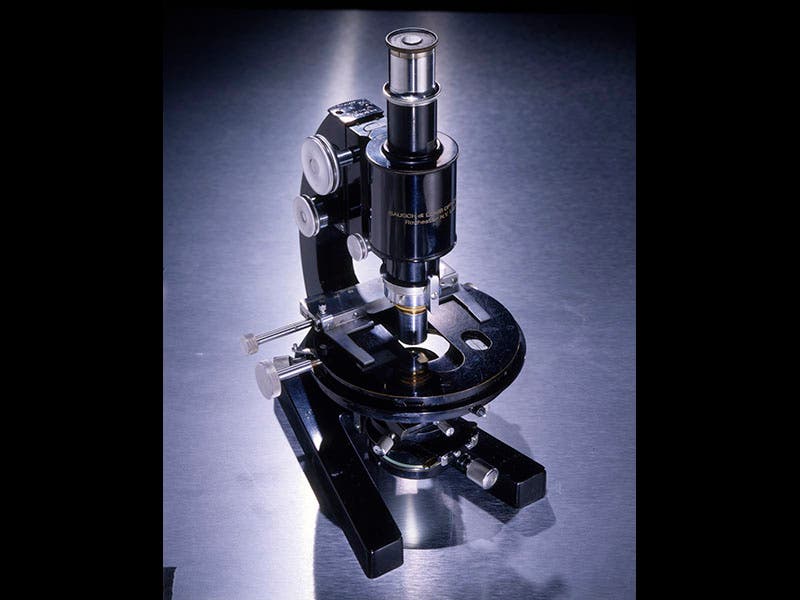Scientist of the Day - Barbara McClintock
Barbara McClintock, an American botanist and geneticist, was born June 16, 1902. McClintock spent many years studying the genes of maize (corn to most of us); the first photo shows her at work in her corn lab at Cold Spring Harbor on Long Island. In 1948, she discovered that many chromosome sequences are not fixed in place, but move around from chromosome to chromosome. These moveable sequences came to be called "transposons," and McClintock noted that their shuffling position sometimes causes visible changes in the maize, such as alterations in the color of the kernels. McClintock's transposons were the first known examples of what would later be termed (inappropriately) "junk DNA," referring to the fact that most DNA does not code for proteins, but has other functions, or perhaps no function at all. In 1983, McClintock was awarded the Nobel Prize in Physiology and Medicine for her work. In 2005, the U. S. Postal Service issued a block of four stamps celebrating great American scientists, and McClintock was one of the four so honored (second image), along with Richard Feynman, John von Neumann, and Josiah Willard Gibbs. McClintock’s microscope is on display in the National Museum of American History in Washington, D.C. (third image). The fourth image is a group photo of plant biologists at a meeting at Cornell in 1926. The twenty-four-year old McClintock is the diminutive figure in the second row, fifth from the left. Dr. William B. Ashworth, Jr., Consultant for the History of Science, Linda Hall Library and Associate Professor, Department of History, University of Missouri-Kansas City. Comments or corrections are welcome; please direct to ashworthw@umkc.edu.










